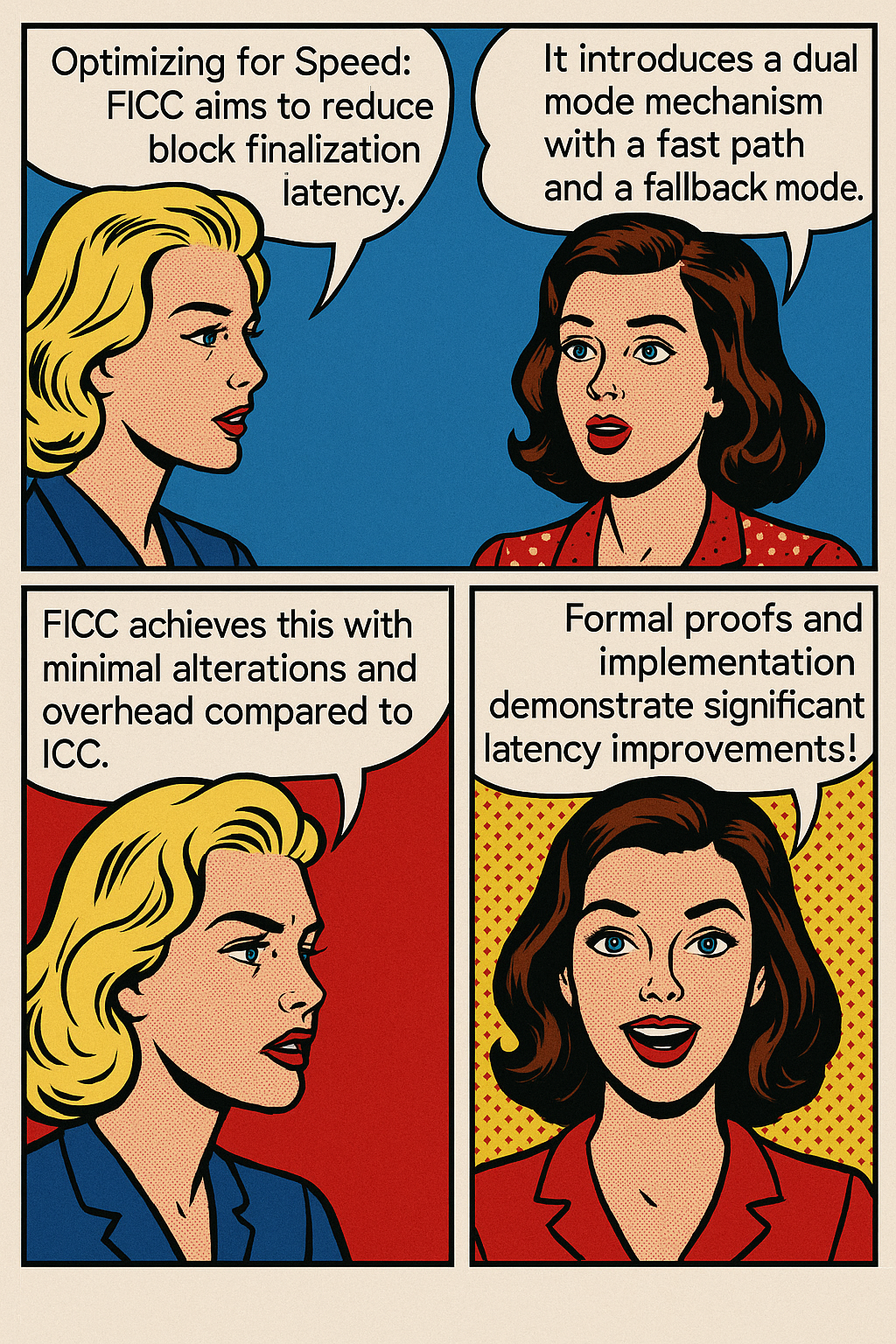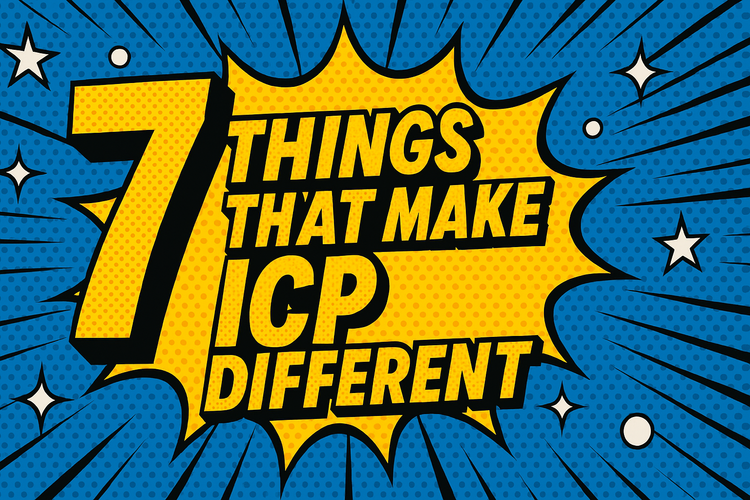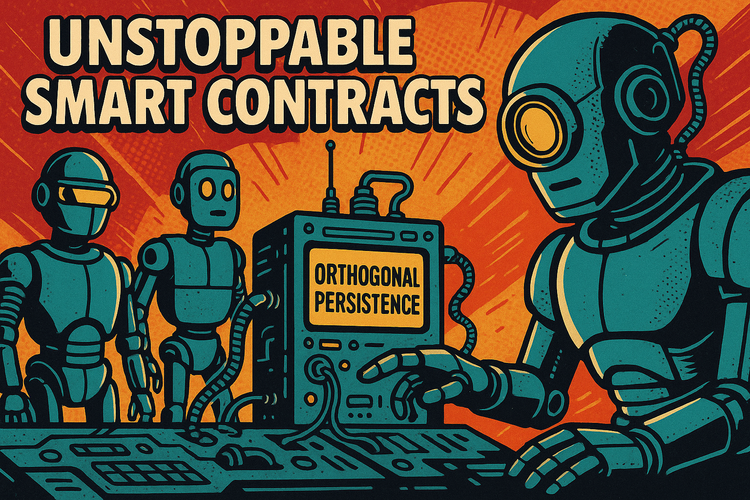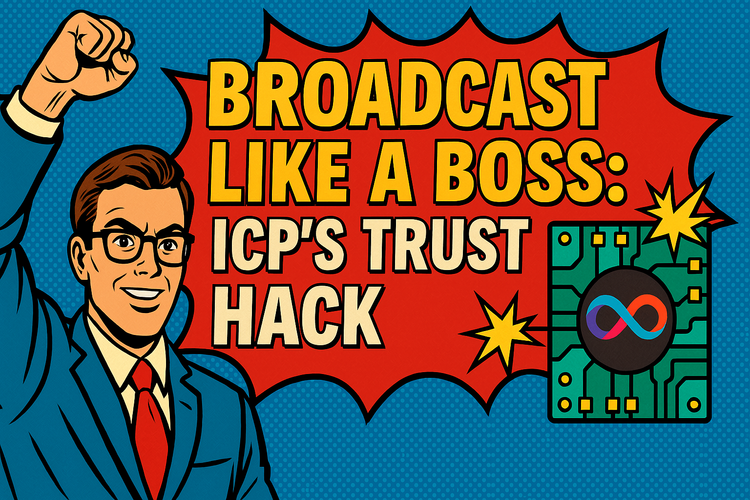FICC: The Internet Computer’s Fast Lane to Finality

How Notoko stumbled upon a 2023 technical paper during a boring scroll and accidentally had a geekgasm.
📚 The Boring Backstory
It all started with a “harmless” scroll through a folder of old PDFs. Notoko, the self-declared geek-in-residence of the cryptosphere, found a paper titled “Fast Internet Computer Consensus.” It sounded dry enough to cure insomnia for some.
But two Red Bulls and a comic sketch later — boom — turns out this thing was a hidden gem of the blockchain nerdverse.
🧠 TL;DR What Is FICC?
The authors (all from ETH Zurich — yeah, the land of academic wizards) introduced FICC — a turbocharged version of the Internet Computer Consensus (ICC) protocol. It’s:
🚀 A Byzantine Fault Tolerant protocol
🔁 Uses rotating leaders
⚡ Confirms transactions in just one round-trip
💪 Doesn’t rely on complicated “view-change” backup plans
👷♂️ Optimized for permissioned blockchains
Think of it like giving the Internet Computer a jetpack — but without overcomplicating the safety system.
⚔️ Fast Path vs Slow Path (and Why You Should Care)
Most consensus protocols have two paths:
- Fast Path: Finalizes quickly but fails if too many nodes act up.
- Slow Path: Takes longer but is robust.
FICC lets both paths run in parallel — which means:
✅ If Fast works: Zoom!
✅ If Fast fails: No penalty, fallback kicks in.
✅ No waste. No stress. No wasted messages.
It's like having a Plan B without the existential dread.
🧪 How Fast Is Fast? The FICC Speed Test
Before we slap a rocket emoji on FICC and call it a day, the team went full lab coat mode to test its real-world chops. Here’s how they did it:
- Setup: 16 AWS EC2 replicas scattered across the globe (like a blockchain Eurovision), with a mix of clustered, distant, and outlier nodes.
- Goal: See if FICC can consistently beat ICC in finalization latency — especially when replicas are spaced out across continents.
🧪 Results in the Wild
FICC beat ICC in latency, with up to 33% speed improvement if you increase nodes to n=5f+1n = 5f + 1.
Translation: More replicas = more speed, not more pain.
🔥 Why It Matters (Even If You Don’t Read Papers)
- For blockchain engineers: It’s practical BFT with minimal communication cost.
- For crypto projects: Faster finality means smoother UX and fewer rage tweets.
- For geeks like Notoko: It’s a proof that Internet Computer keeps evolving quietly under the hood.

🧠 Final Byte: Fast Path, Future-Proof
FICC isn’t just a speed tweak — it’s a real upgrade to the Internet Computer’s consensus game. By introducing a clever dual-mode system, it bridges the gap between modern SMR protocols and fast consensus literature, all without extra baggage.
The fast path isn’t just theory; experiments prove it cuts latency when the network isn’t being a diva. And if things get messy? You can tune the protocol with a parameter pp, making it either super strict (kick out the slackers) or super tolerant (embrace the chaos).
Bottom line: FICC gives permissioned blockchains a faster finality engine with a built-in safety dial — because sometimes, you really can have it all. 🚀
Stay Notoko...Stay Fast !
💡 Subscribe to Notoko Bytes for more crypto chaos straight to your inbox! 🚀

Want to feature your brand on Notoko Bytes? 🚀 Contact us at ctrascend@gmail.com for sponsored posts!
Disclaimer
*The information and analysis provided in this article are intended for educational and informational purposes only and should not be considered as financial, investment, or professional advice. While our team strives to ensure the accuracy and reliability of the content, we make no representations or warranties of any kind, express or implied, about the completeness, accuracy, reliability, suitability, or availability of the information presented.
The content within this article may include opinions and forward-looking statements that involve risks and uncertainties. The blockchain and cryptocurrency markets are highly volatile, and past performance is not indicative of future results. Any reliance you place on the information presented is strictly at your own risk. Before making any investment decisions, we highly recommend consulting with a qualified financial advisor or conducting your own thorough research.
By accessing and using the information provided in this article, you acknowledge and agree that neither the authors, publishers, nor any other party involved in the creation or delivery of the content shall be held liable for any direct, indirect, incidental, consequential, or punitive damages, including but not limited to loss of profits, goodwill, or data, arising out of your use or inability to use the information provided or any actions you take based on the information contained within this section.*





